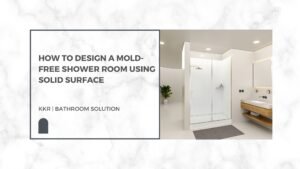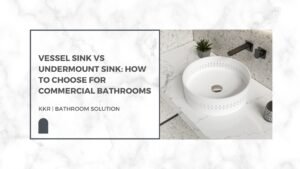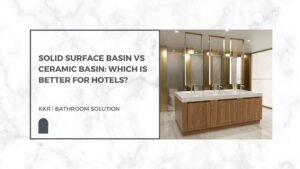Bathrooms are among the most humid environments in any building — a perfect breeding ground for mold and bacteria. While traditional ceramic basins have been used for decades, modern solid surface basins are becoming the preferred choice for hotels, hospitals, and homes worldwide. One of the biggest reasons? Their superior hygiene performance.
This article explores why solid surface materials naturally resist mold and bacteria better than ceramic, and how this difference benefits architects, developers, and facility managers.
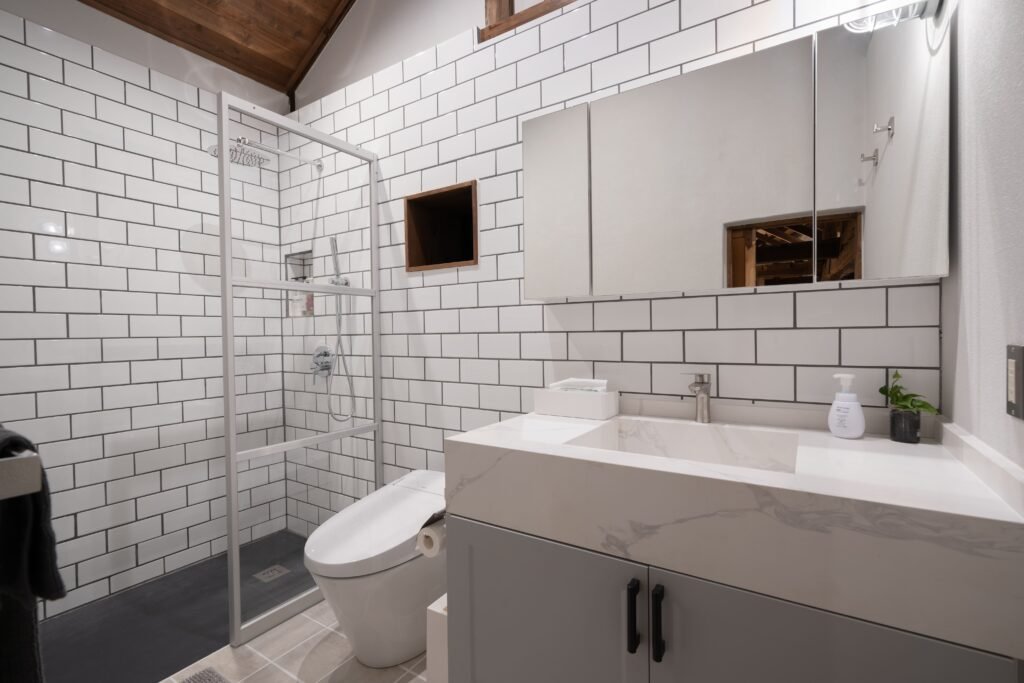

Understanding the Science Behind Mold Growth
Mold and bacteria thrive on moisture and porous surfaces. In high-humidity areas like bathrooms, any small pore or crack can trap water and allow microorganisms to multiply. Over time, this not only affects hygiene but can also cause discoloration, odors, and even surface damage.
Ceramic basins, though glazed, often develop microscopic cracks or surface pores over years of use — particularly along the edges or joints. Once the glaze weakens, water can penetrate and allow mold spores to settle.
Solid surface materials, on the other hand, are completely non-porous and seamless. This means there are no gaps, joints, or pores for mold to grow in.
Why Solid Surface Is Naturally Mold-Resistant
Here’s what makes solid surface basins so resistant to mold and bacterial growth:
1. Non-Porous Composition
Unlike ceramic, solid surface basins are made from acrylic resin blended with natural minerals such as aluminum trihydrate. This results in a completely non-porous material — no microholes, no cracks, no water absorption.
Because moisture can’t penetrate the surface, bacteria and mold have nowhere to anchor.
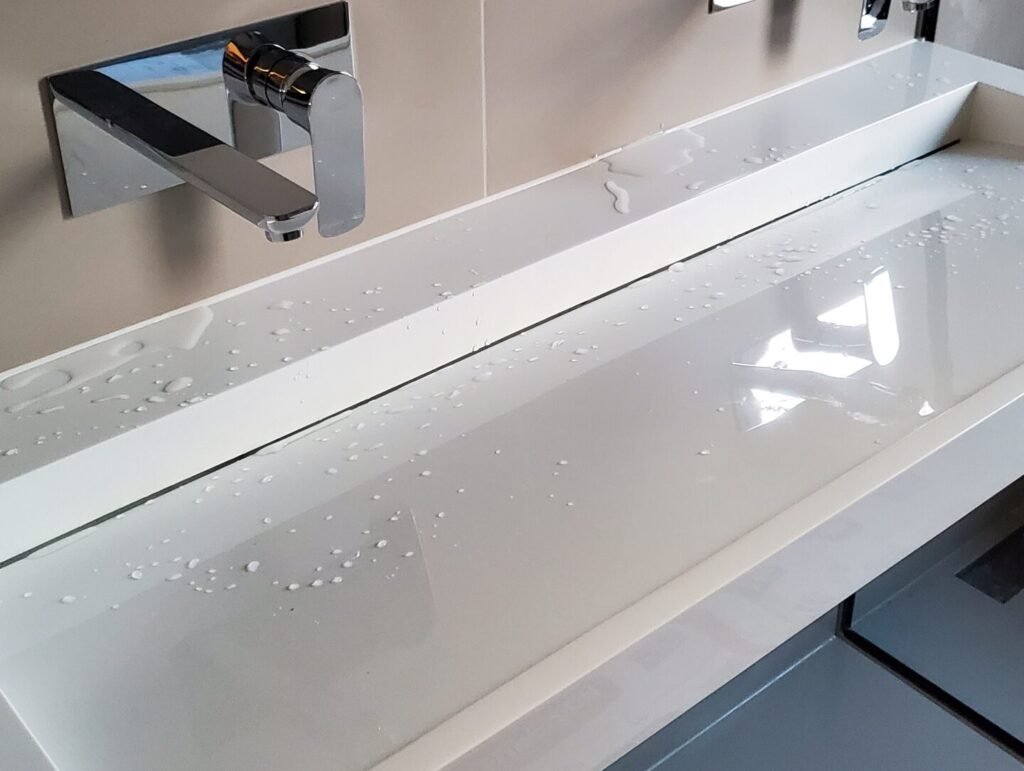

2. Seamless and Joint-Free Design
Solid surface allows for integrated fabrication — the basin and countertop can be molded as one continuous piece. Fewer seams mean fewer bacteria traps.
This seamless integration is particularly useful for hotels, airports, and healthcare projects, where hygiene standards must remain consistently high.
3. Easy to Clean and Disinfect
The smooth, non-porous texture of solid surface makes it easier to clean compared to ceramic. Even if dirt accumulates, it stays on the surface rather than seeping inside.
Simple maintenance with mild detergent or disinfectant is enough to keep it spotless. There’s no need for bleach or harsh chemicals that might damage the surface.
4. Antibacterial Additives
Many high-end manufacturers, including KKR®, incorporate antibacterial agents into the solid surface formulation. These additives actively inhibit microbial growth, enhancing hygiene over time.
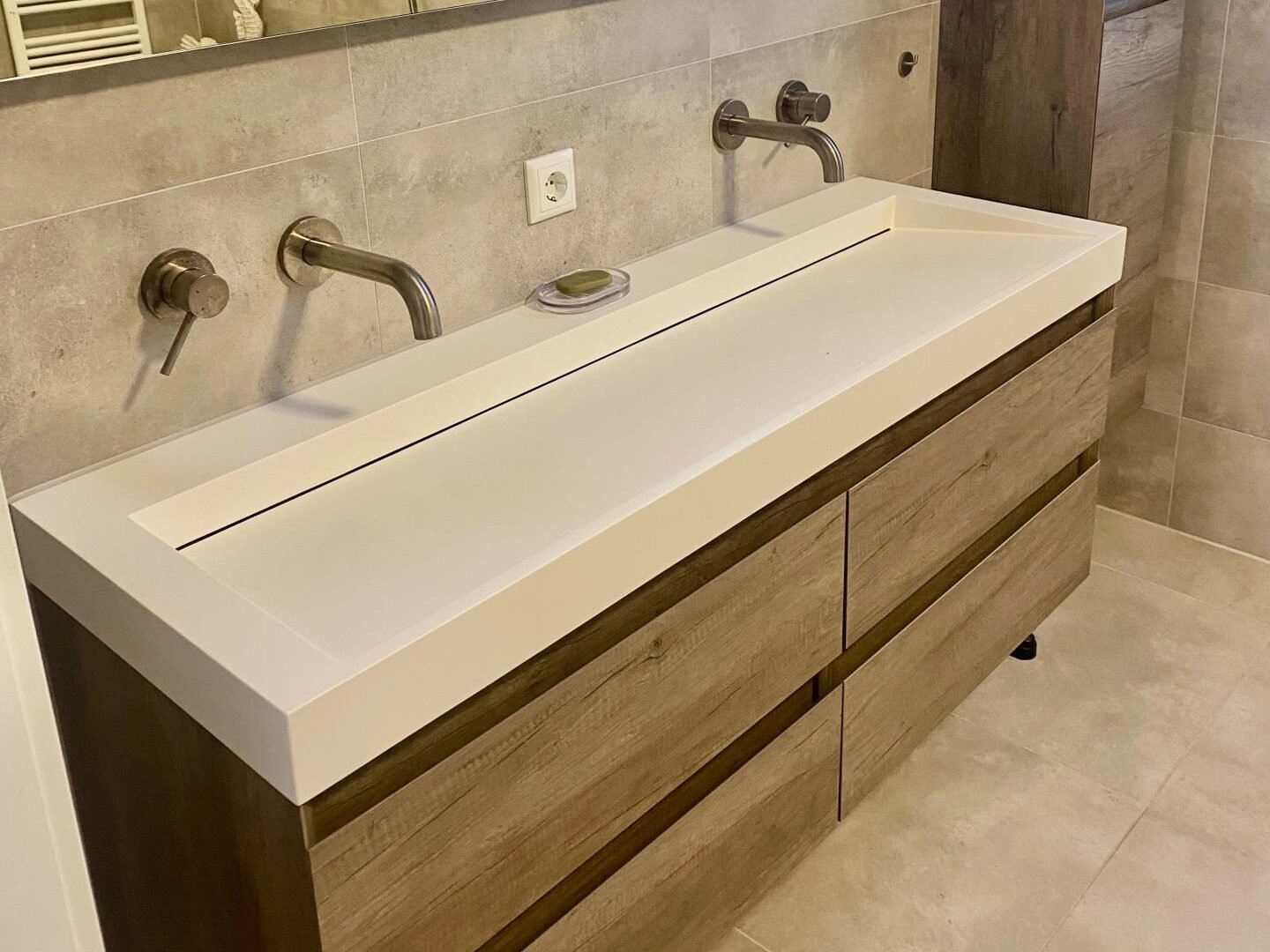

5. Long-Term Durability
Because solid surface can be refinished and polished, even if surface wear occurs, the basin can be restored to like-new condition — ensuring continued resistance against mold and bacteria for many years.
Real-World Benefits for Commercial Projects
For developers and designers, the hygienic advantage of solid surface basins goes far beyond visual appeal:
- Hotels & Resorts: Reduced maintenance costs and better guest satisfaction.
- Hospitals & Clinics: Compliance with strict hygiene standards (non-porous, easy disinfection).
- Restaurants & Public Facilities: Longer lifespan and fewer hygiene complaints.
- Residential Projects: Safer and easier to maintain for families, especially in humid climates.
Solid Surface vs Ceramic: Hygiene Comparison
| Feature | Solid Surface | Ceramic |
|---|---|---|
| Surface Porosity | Non-porous | Porous (after glaze wears) |
| Seamless Integration | Yes | No |
| Mold Resistance | Excellent | Moderate |
| Cleaning Ease | Easy | Requires harsh chemicals |
| Repairability | Can be refinished | Must be replaced |
| Antibacterial Properties | Built-in options | None |
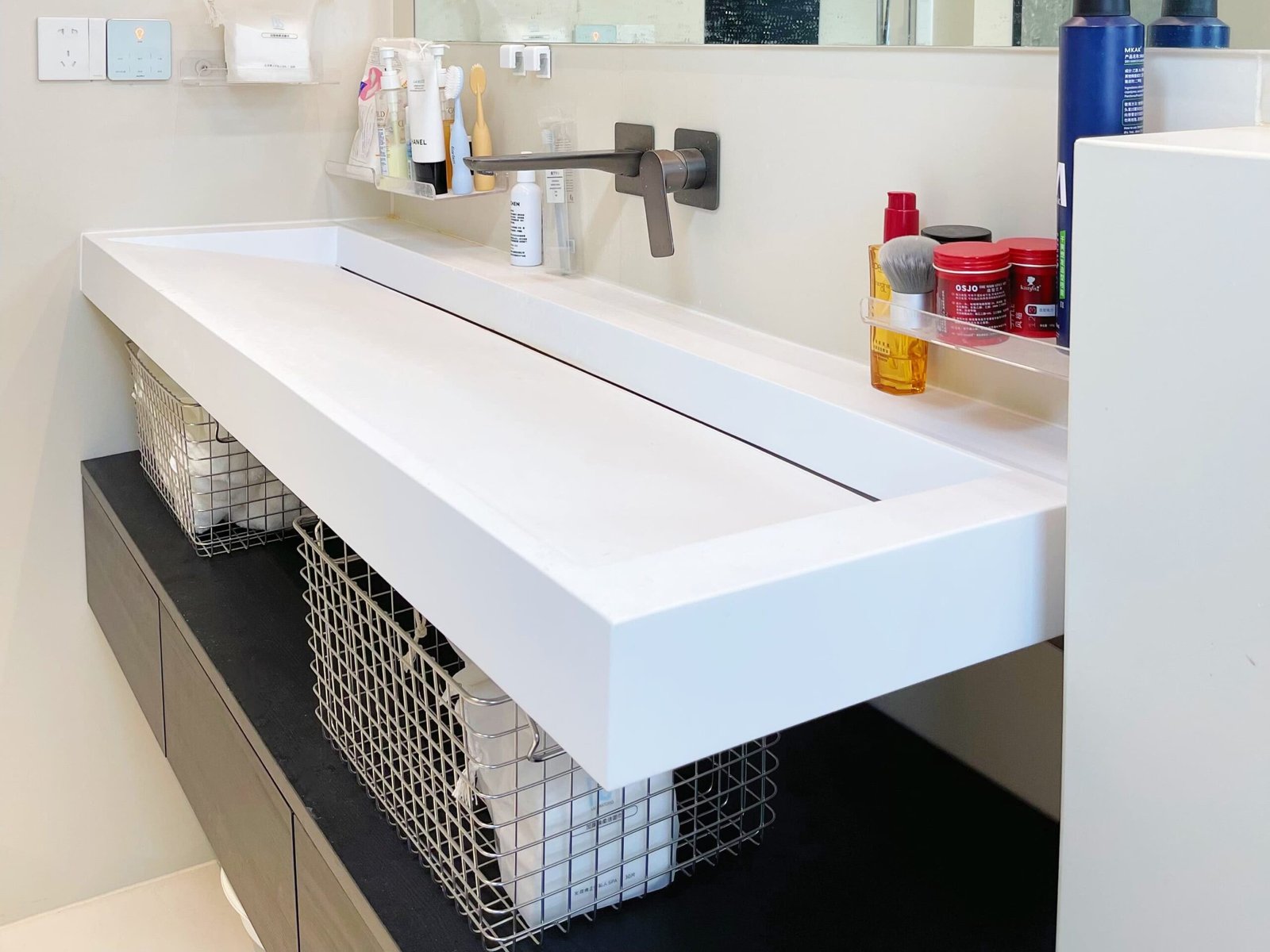

Conclusion
In high-humidity environments, solid surface basins outperform ceramic in every way — from mold prevention to antibacterial performance. Their seamless, non-porous construction and refinishing ability make them the go-to solution for commercial and residential bathrooms alike.
KKR® solid surface basins combine 25 years of craftsmanship, modern design, and built-in hygiene features trusted by global hotel and healthcare projects.
👉 Explore the full collection at www.kkrbath.com
FAQ
Q1: Why does mold not grow on solid surface basins?
A: Because the material is non-porous, water cannot penetrate, eliminating the conditions mold needs to grow.
Q2: Are solid surface basins suitable for hospitals or public bathrooms?
A: Yes. They are highly recommended for spaces that demand hygiene, as they are easy to clean and disinfect.
Q3: Can a solid surface basin develop mold if not cleaned?
A: Only surface dirt may accumulate, but mold cannot grow inside the material itself. Regular cleaning keeps it spotless.
Q4: Do solid surface basins require sealing like stone?
A: No. Solid surface materials are naturally non-porous and do not need any sealing.
Q5: Is solid surface environmentally friendly?
A: Many brands, including KKR®, use eco-friendly resins and low-VOC materials, making them sustainable and safe for indoor use.
